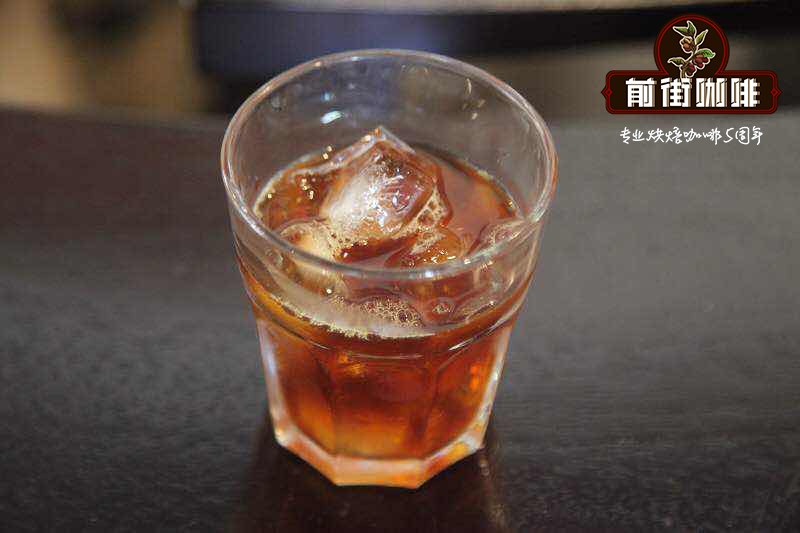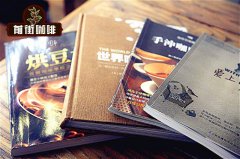Cold coffee needs to use hot water? Cold coffee how to do good to drink what scientific methods

Professional coffee knowledge exchange more coffee bean information please follow the coffee workshop (Wechat official account cafe_style)
There must be a reason why cold coffee is so popular. Sensory studies show that consumers are generally able to tell the difference in the taste of cold coffee and favor it. In fact, more than 50% of consumers said they chose cold coffee because it tastes better, rather than simply pursuing caffeine stimulation.
Figures show that sales of cold extract coffee in North America are expected to exceed $1.4 billion this year.
As far as coffee enterprises are concerned, the market opportunity of cold extract coffee is still huge. But for cold-extracted coffee products to be a blockbuster, we must make more efforts on the choice of beans, the way they are roasted, the degree of grinding, the soaking time and the water temperature. Today, let's analyze how to make perfect cold coffee from a scientific point of view.
1. About the choice of coffee beans
Of course, we can roughly classify coffee according to its origin. For example, African coffee usually has fruit aromas such as blueberry and lemon, while Brazilian coffee has nutty, earthy and cocoa aromas.
However, based on the origin alone, it is difficult to accurately define the taste characteristics of a particular variety of coffee. Abhinandya Datta, a coffee and tea extraction expert from Kerry RD&A, said: "soil composition, altitude, humidity and temperature all affect the taste of coffee because these factors affect the quality and quantity of moisture, sugar and amino acids in coffee, as well as the content of chlorogenic acid in raw beans."
The treatment of raw beans is also very important, such as sun, semi-washed and washed coffee all have an impact on the chemical composition of coffee, so even the same variety of coffee on the same plantation will be treated differently. With completely different taste characteristics.
The charm of cold-extracted coffee is that any single or mixed coffee can make cold-extracted coffee, so choose the variety of coffee beans carefully according to your own taste preferences and your customers' taste preferences.
two。 About the degree of baking
The degree of roasting also affects the taste of cold-extracted coffee. Roasting can greatly change the physical and chemical structure of coffee beans. "the main chemical reaction is the Merad reaction." "the reaction produces large amounts of aromatic substances, such as sulfur, aldehydes, furans, pyrazine and pyridine, which bring nutty, malt and caramel flavors to coffee," Datta said.
The longer the roasting time, the higher the roasting temperature, the deeper the roasting degree of the coffee, the higher the caramelization, the sweeter the coffee, the heavier the roasting taste, the darker the color. Deep-roasted coffee usually has a smoky flavor because more chlorogenic acid is broken down into guaiacol. But we should pay attention to caramelization can not be too high degree will make coffee with charred and dusty taste, cover up the original flavor of coffee.
The shorter the baking time, the lower the roasting temperature, which will give the coffee a stronger sour taste and more delicate flavors, such as fruit and vanilla. But if the degree is too light, the taste of the coffee will not be enough, the coffee will have the smell of grass and the acidity will be too high. Sensory analysis shows that consumers do not like acerbity and astringency. "the astringent taste is due to the high content of chlorogenic acid, while the sharp acid is due to the high content of citric acid, acetic acid and quinic acid."
Therefore, through continuous experiments, to find the best baking time and temperature, to ensure that the original delicate taste of coffee, at the same time, do not let the coffee with too high sour and astringent taste.
3. On the degree of grinding and water volume
The degree of grinding is the key to balance coffee extraction. If the coffee powder is too thick, the extraction of coffee will not be sufficient, this is because the contact area between coffee and water is not large enough, which will make the cold coffee taste indifferent and tasteless. If the coffee powder is too fine, it will make the coffee extract too much bitterness or sour taste.
The experiment found that cold-extracted coffee should use thicker ground coffee powder, and the amount of coffee powder should be larger, and the higher gouache ratio will make the coffee more silky and stronger.
Increasing the amount of powder is the key to ensuring the sweetness, caramel and fruit taste of cold extracted coffee, while avoiding excessive bitterness, dust and burnt taste of coffee, and ensuring the best taste of coffee.
4. About the brewing condition
The extraction temperature of traditional coffee should be between 185205 ℉, while the extraction temperature of cold extraction coffee is not fixed.
Our experiments show that in order to ensure the best taste of cold extracted coffee, soak the coffee in cold water or water at room temperature for 12-24 hours.
Traditionally, if the time is too long, the temperature will be too high, which will lead to excessive extraction of coffee; if the time is too short or the temperature is too low, the extraction of coffee will be inadequate and the taste will be insipid.
However, since cold-extracted coffee does not need to be heated, we must extend the soaking time to ensure the silky taste and sweet taste of the coffee.
Of course, when considering the water temperature and immersion time, the type of equipment should be considered. The soaking time and water temperature corresponding to different equipment are different, so it is necessary to find out the best soaking method through continuous experiments.
Important Notice :
前街咖啡 FrontStreet Coffee has moved to new addredd:
FrontStreet Coffee Address: 315,Donghua East Road,GuangZhou
Tel:020 38364473
- Prev

American coffee machine FAQ what if the coffee brewed from the American coffee machine is too weak
Professional coffee knowledge exchange more coffee bean information Please follow the coffee workshop (Wechat official account cafe_style) with the widespread use of American coffee machines, coffee machine-related problems follow, so how to solve these problems? Let's take a look. 1. Coffee is too light: it is mainly caused by the improper use of water and coffee powder, according to different American coffee.
- Next

Where is the origin of Kopi Luwak? how should Kopi Luwak be brewed and drank? should I use siphon?
Professional coffee knowledge exchange more coffee bean information please follow the introduction of coffee workshop (Wechat official account cafe_style) Kopi Luwak Muscat Coffee (Kopi Luwak), produced in Indonesia. It is one of the most expensive coffee in the world, costing up to several hundred dollars per pound. It is extracted from the feces of the civet and processed. The civet eats the ripe coffee fruit.
Related
- Beginners will see the "Coffee pull flower" guide!
- What is the difference between ice blog purified milk and ordinary milk coffee?
- Why is the Philippines the largest producer of crops in Liberia?
- For coffee extraction, should the fine powder be retained?
- How does extracted espresso fill pressed powder? How much strength does it take to press the powder?
- How to make jasmine cold extract coffee? Is the jasmine + latte good?
- Will this little toy really make the coffee taste better? How does Lily Drip affect coffee extraction?
- Will the action of slapping the filter cup also affect coffee extraction?
- What's the difference between powder-to-water ratio and powder-to-liquid ratio?
- What is the Ethiopian local species? What does it have to do with Heirloom native species?

